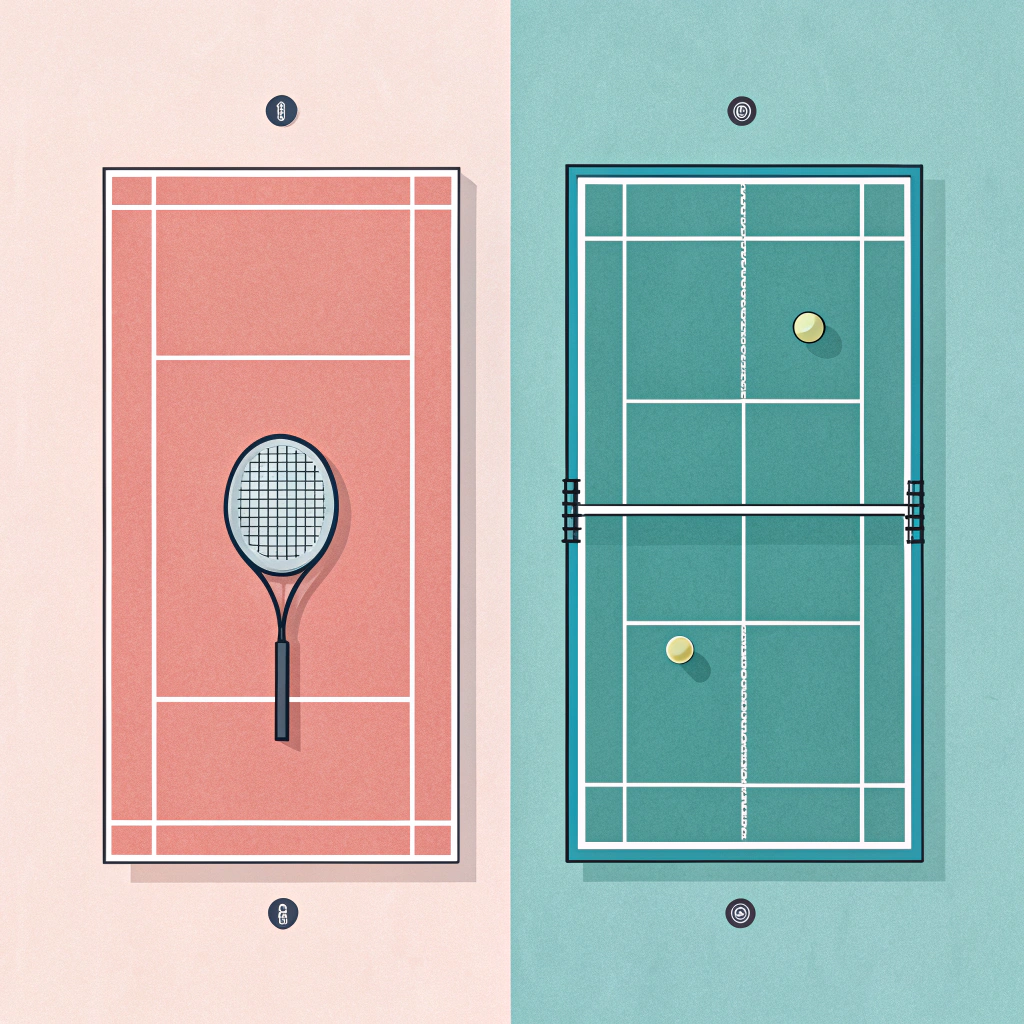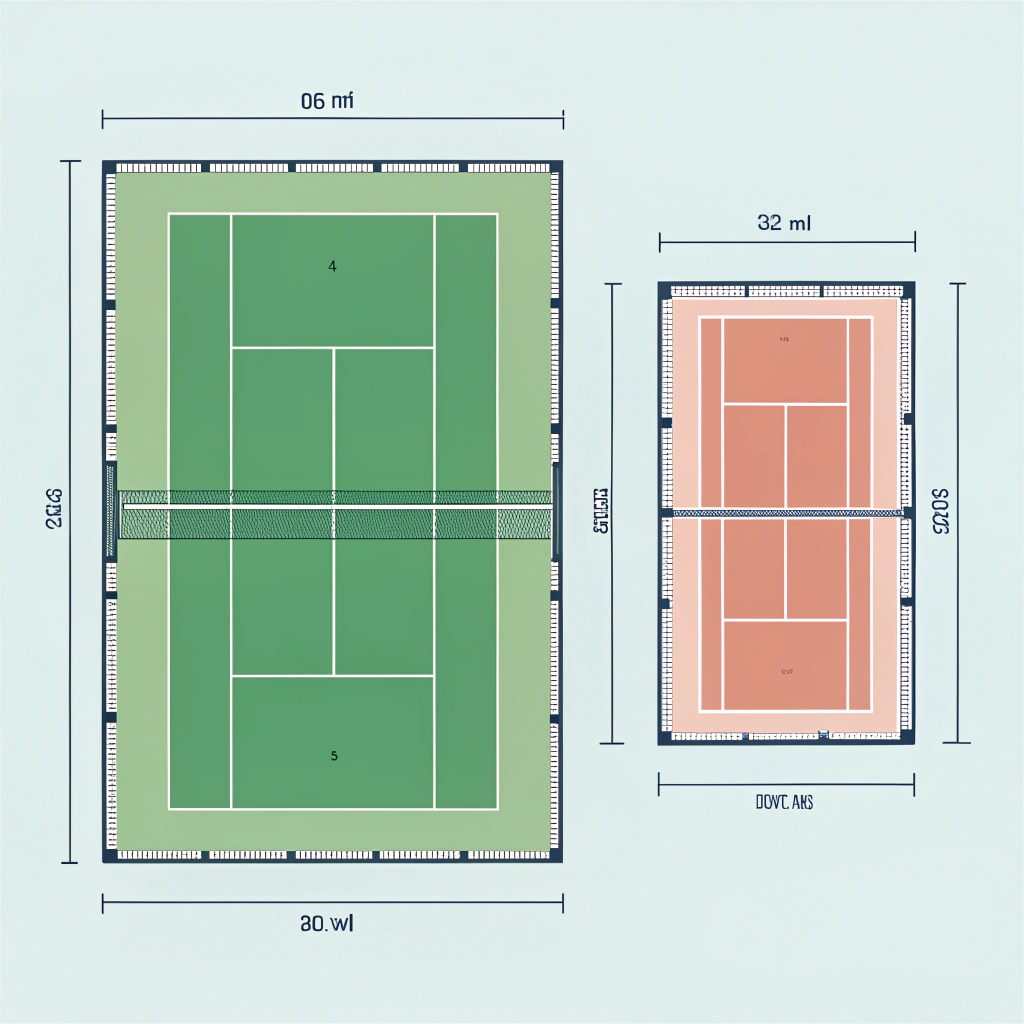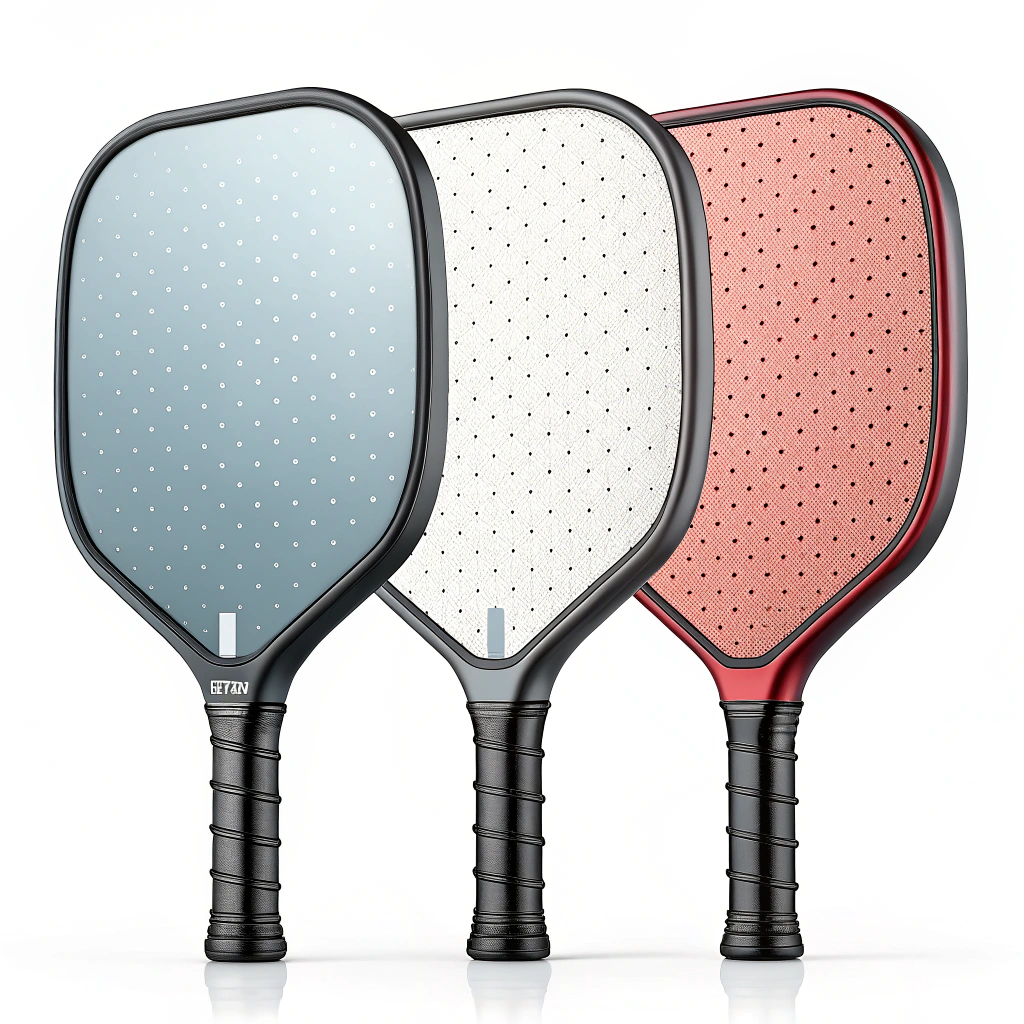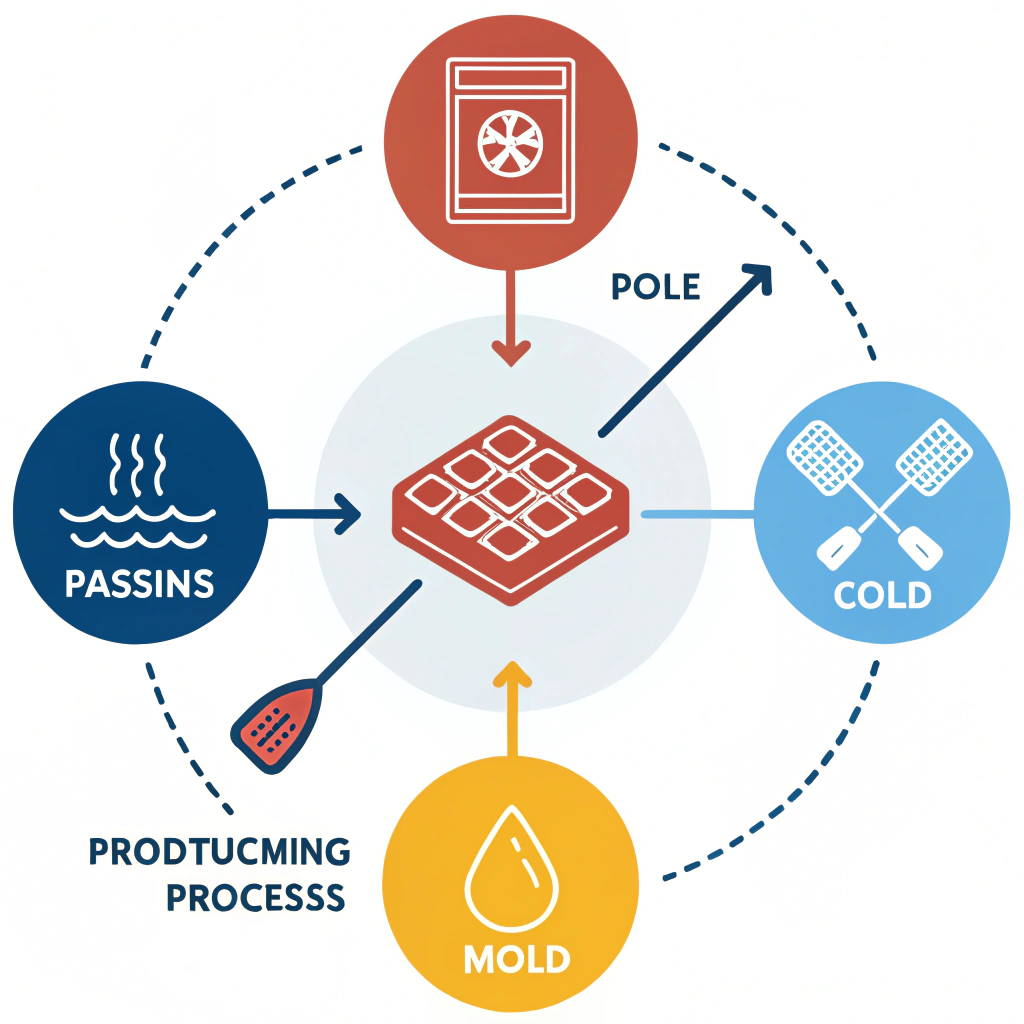Pickleball is much more than simply a slower version of tennis—it is an emerging sport with its own unique dynamics, equipment requirements, and market appeal. In this article, we compare pickleball and tennis from an equipment, production, and market trends perspective, helping distributors and retail buyers understand the many factors driving this shift.
At first glance, the repeated comparison of pickleball to tennis may seem justified due to the similarities in using racquets (or paddles) and playing on designated courts. However, key differences set them apart. While tennis features a larger court, faster-paced play, and higher physical exertion, pickleball is designed for moderate exercise and encourages social play through its more accessible court sizes and slower game pace. The smaller court dimensions and simplified rules allow pickleball to become accessible to a broader demographic including seniors, beginners, and those seeking a less strenuous workout.
Key differences include:
-
Court Size and Setup:
Tennis courts are expansive and require higher endurance, whereas pickleball courts are smaller, fostering a more inclusive and less physically demanding environment. -
Game Pace:
Tennis is known for swift, powerful volleys and dynamic movements. In contrast, pickleball emphasizes control and strategy, making it a sport that is both competitive and social. -
Player Demographics:
Pickleball’s flexible pace attracts varied participants, including older adults and casual players, while tennis tends to attract players who pursue high endurance and agility. -
Equipment Nuances:
Tennis requires heavy racquets with strung surfaces, while pickleball relies on lightweight paddles. For distributors, understanding these nuances is essential in tailoring product portfolios.
For industry professionals and sports equipment distributors, the exciting development in paddle technology has been a game changer. At NEX Pickleball, our paddles are designed not merely as substitutes for tennis racquets but as finely tuned instruments built with advanced production techniques1.
Paddles are crafted using state-of-the-art materials that include carbon fiber2, fiberglass3, and various composite materials4. Each material brings distinct benefits:
-
Carbon Fiber:
- 3K Carbon Fiber: Offers excellent durability and high rebound force, ideal for players seeking power without sacrificing flexibility.
- 12K Carbon Fiber: Provides a smoother surface and enhanced hardness, making it perfect for high-impact competitive play.
- T300 Carbon Fiber: Balances strength with lightweight properties, ensuring that players experience both power and control.
-
Fiberglass:
- E-Glass Fiberglass: Known for its elasticity and tensile strength, it offers a wider sweet spot and enhanced control, which can be especially attractive to newer players.
-
Composite Materials:
- Carbon Fiber and Fiberglass Composite: Merges the benefits of both materials, striking an optimal balance of power, lightness, and flexibility.
- Bamboo Core Composite: Provides durability and a clear hitting feel, making it suitable for long-lasting play.
- Honeycomb Core: Features superior shock absorption properties to maintain paddle stability while reducing vibration.
The production process plays a critical role in differentiating paddle performance and quality. The following table outlines the main production methods used by NEX Pickleball along with their advantages and disadvantages:
| Production Process | Advantages | Disadvantages |
|---|---|---|
| Hot Pressing | High production efficiency; strong paddles with excellent impact resistance; maintains structural integrity. | May alter material properties affecting paddle feel; high equipment investment required. |
| Cold Pressing | Precise control over paddle thickness; preserves material properties for better control and flexibility; excellent ball feel and responsiveness. | Longer production cycles; demands high-quality and precise pressure control. |
| Thermoforming5 | Creates intricate designs; precise material distribution ensures paddle stability and performance. | Longer production time; higher equipment costs, best for premium products. |
This table not only illustrates the differences in manufacturing techniques but also helps distributors understand how to align product offerings with consumer expectations and performance demands.
Each paddle from NEX Pickleball is also tailored to ensure optimal weight distribution and ergonomic grip design. We offer various grip sizes to meet the diverse needs of players at all levels. These technical details help in positioning pickleball paddles as high-performance equipment rather than mere imitations of tennis racquets.
The rapid growth of pickleball is not merely due to its equipment or playing style; consumer perception and social trends play significant roles. Pickleball is often celebrated for its accessibility and community-driven nature. This sport enjoys an enthusiastic following because of its inherent capacity for social interaction—a characteristic that is less prevalent in tennis.
Recent market data suggests that the number of pickleball players has dramatically increased over the past few years. The game now appeals to a wider age range compared to tennis. Notably, there is a higher participation rate among women in pickleball, further diversifying the community and broadening its consumer base. These trends are significant for sports equipment distributors, as they signal the potential for continued market expansion and product diversification.
Pickleball courts tend to be more crowded with organized play, which creates an environment of camaraderie and shared experience. This phenomenon can create a psychological proximity among players that is less evident in tennis, where the playing field may feel more segregated. The social acceptance and community-building aspect of pickleball drive its popularity, making it an attractive option in both recreational and competitive settings.
For manufacturers and distributors, technological innovation in paddle design and production is key to capitalizing on these trends. With NEX Pickleball’s focus on using advanced production techniques and premium materials, the resulting paddles not only enhance player performance but also cater to evolving market needs. Whether the focus is on high-impact competitive play or social recreational use, the ability to customize paddles through on-demand printing services provides a competitive edge in retail markets.
To maintain high quality in our sports equipment, each paddle undergoes strict quality control through the production methods we have refined over the years. Understanding these processes is essential for any distributor looking to align with manufacturers who prioritize performance and durability.
-
Hot Pressing:
With high efficiency and strength, this process ensures that paddles withstand the rigors of competitive play. However, it requires careful balancing of material properties to avoid altering the tactile feel of the paddle. -
Cold Pressing:
Beneficial for maintaining the original properties of the materials, cold pressing allows for precise control over the paddle’s structure. This results in enhanced ball control and overall performance, albeit at slower production speeds. -
Thermoforming:
This method enables the creation of paddles with complex designs and layered material distribution. While costly, thermoforming is ideal for premium paddle offerings that require detailed customization and a focus on stability.
Distributors and retailers can leverage the advantages of these advanced manufacturing techniques by offering customizable paddle options. Whether it's specifying weight distribution, grip size, or even visual branding through on-demand print services, these customization options add significant value. This not only strengthens product differentiation in a competitive market but also addresses specific consumer preferences that vary by region and demographic.
A summarized comparison of the three production processes used in paddle manufacturing from NEX Pickleball is provided below:
| Production Technique | Key Benefit | Ideal For |
|---|---|---|
| Hot Pressing | High impact resistance and efficient mass production | Competitive play with a need for durability |
| Cold Pressing | Optimal control and material integrity | Players seeking excellent ball feel and control |
| Thermoforming | Intricate design and precise material distribution | Premium and custom paddles requiring advanced design features |
These insights highlight the diverse aspects of paddle production that make pickleball equipment a sophisticated, engineered product—far removed from being characterized as merely “slow tennis” equipment.
In analyzing the market dynamics between pickleball and tennis, several strategic implications emerge for sports equipment distributors and retail buyers:
-
Product Innovation and Differentiation:
By aligning with manufacturers like NEX Pickleball that invest in technology-driven processes and premium materials, distributors can offer products that satisfy both performance needs and customizable options. This approach enhances brand reputation and meets consumer demands for high-quality, reliable sports equipment. -
Targeting Diverse Demographics:
With pickleball attracting a broader range of players, particularly among women and older adults, retail buyers have the opportunity to diversify their product portfolios. This segmentation allows for targeted marketing strategies that capitalize on the sport's widespread appeal. Customization options further allow retailers to tailor paddle characteristics to meet these segmented needs. -
Adapting to Market Trends:
Trends indicate that pickleball is not a passing fad; its organized and socially engaging nature has spurred a steady growth in participation. Distributors need to monitor these trends closely and remain agile by aligning inventory and marketing strategies with evolving consumer behaviors. Offering a mix of performance-focused and recreational products can help capture a larger market share. -
Quality and Consistency as Key Differentiators:
The advanced production processes employed by NEX Pickleball ensure that every paddle meets strict quality standards. Distributors can use these quality assurances as a major selling point, reassuring buyers that the equipment they supply is built to perform and last—a critical factor in a market increasingly focused on sustainability and performance longevity.
In summary, while some may dismiss pickleball as merely "slow tennis," a closer examination reveals that it is an entirely distinct sport with a unique set of dynamics. Its appeal lies not only in its accessible pace and social nature but also in the advanced equipment engineering that supports its growth. Distributors and retail buyers should view these developments as opportunities to broaden their product offerings and tap into a growing market segment. Emphasizing product innovation, customization, and quality control will ensure that the equipment meets the demands of both competitive and recreational players.
The evolution of paddle designs and manufacturing processes means that consumers are now choosing equipment that is no longer just about performance but also about a tailored playing experience. With technologies such as hot pressing, cold pressing, and thermoforming, manufacturers can deliver superior products that redefine how sports equipment is perceived. This shift is not just a trend—it is a transformation in the sports equipment industry, signaling significant market potential for dedicated distributors.
For sports equipment distributors and retail buyers looking to invest in the future of racket sports, embracing the innovations in paddle technology and understanding the differences between pickleball and tennis could be the key to staying ahead in a rapidly evolving market. As the demand for accessible, high-quality, and customizable sporting goods increases, partnering with leading manufacturers becomes not just a necessity but a strategic advantage.
-
Is pickleball just slow tennis?
Pickleball offers a distinct experience with its smaller court, slower pace, and specialized paddle technology. While tennis is fast-paced and physically demanding, pickleball is designed for moderate exercise and social interaction, appealing to a broader demographic. -
Why is pickleball replacing tennis?
Pickleball's structured, organized format and its ability to foster social connections create a more engaging environment. Additionally, its accessibility and lower physical demand make it attractive to a wider range of players, which supports its growing popularity over traditional tennis. -
Do more people play pickleball or tennis?
Recent trends indicate that more people are engaging in pickleball. The sport has expanded rapidly in participation, with its appeal cutting across age groups and showing particularly high engagement among women, suggesting that its popularity is steadily surpassing that of tennis.
-
advanced production techniques: Reading this article provides insights into modern manufacturing methods that enhance product performance and consistency. ↩ ↩
-
carbon fiber: This article explains the properties of carbon fiber, its advantages in durability and performance, and its applications in sports equipment. ↩ ↩
-
fiberglass: Explore this article to learn about fiberglass, a material known for its strength and elasticity, used widely in equipment manufacturing. ↩ ↩
-
composite materials: This article details composite materials, highlighting how combining different substances can enhance strength, flexibility, and weight reduction. ↩ ↩
-
thermoforming: Reading this article will offer an understanding of thermoforming, a manufacturing process that enables intricate design and precise material distribution. ↩ ↩







